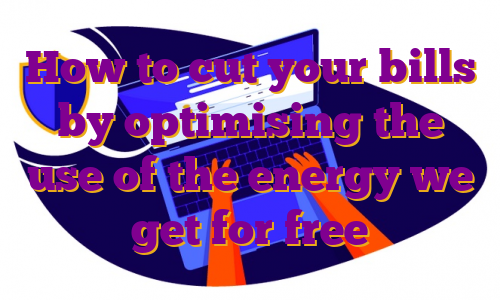There is good bit of talk at the moment about energy production, but the laws of physics state that energy cannot be created or destroyed — it can only change form.e do not produce energy, we just process it.
I put diesel in the tractor and the wheels move; I switch on the kettle and the water heats. My actions cause energy to change from one form to another.
To make the actions, I too need energy in the form of food, so where does that come from? Food production combines energy from diverse sources into forms that we ourselves can consume.
Green leaves are the original solar panels and have the extraordinary ability to transform the sun’s rays into carbohydrates which we can consume for energy in many different ways.
The potato on my plate is photosynthetic energy that was stored in a tuber by the potato plant, and if there is a piece of meat on the plate it is also the sun’s energy, transformed into grass or grains and consumed by an animal.
Farmers have a better claim to being energy producers than do, for instance, people who pump gas out of the ground.
By harnessing the sun’s energy farmers have the capacity to add to amount of energy available on our planet, even if we do not change the universal energy volume.
In contrast, fossil fuels are ancient sunshine, and when they are gone, they are gone.
Sunshine is free but plants need other stuff that we usually have to pay for on the farm.
With dramatic shifts in the relative values of the energy that farming consumes (our inputs) and the energy we produce (the food we sell), it is a good time to look at our energy balance sheets.
Can we optimise the use of the free energy and reduce our dependence on what we have to pay for?
The juiciest of the low-hanging fruits is soil pH. If you are lucky enough to farm soils with low pH, get the finger out and apply lime.
High pH is just as bad for plants and there is no quick fix — so farmers on acid soils who do not deal with it should not expect sympathy from people (like me) on alkaline soils.
Correct pH is like hot dinner for a hungry plant.
Water is another input that is more or less free and can have a big bearing on photosynthesis. A surplus or a shortage of it limits the plant’s access to nutrients that are vital to the process.
Better soil structure and higher levels of organic matter help to keep the right amount of moisture around the roots.
Soil organisms also play a big role in delivering nutrients to plants. In a healthy soil up to 60pc of the carbohydrates that a plant produces through photosynthesis are fed to the soil biology in return for nutrients that the plant needs.
It pays to look after these bugs, and make sure they have the right moisture levels.
If minor elements are out of balance they can limit uptake of major ones. Tissue and sap analysis can show the weaknesses, and a relatively small spend can pay good dividends.
None of these actions will cost a lot in terms of tonnes of nitrogen, but all will produce healthier plants needing less pesticides and leaving better margins — more output with less inputs.
Crop production is a bit like driving a hybrid car: if you just run along on the petrol/nitrogen part the whole time and don’t use the electric/plant health part, you are kind of missing the point and are not going to save anything — including the planet.
Andrew Bergin is a tillage farmer based near Athy, Co Kildare

